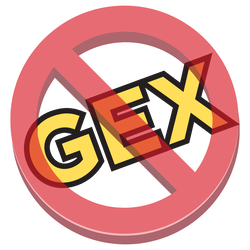|
Newcomers to Volland frequently ask why other option gamma sites' data is incorrect, specifically for GEX calculations. Gamma exposure, better known as GEX, is pervasive on the internet. Many come to Volland frustrated with GEX and hoping it is something different and better. The concept of GEX was introduced by SqueezeMetrics in 2017, in what was a very different time in options trading. It was described in his seminal white paper called “Gamma Exposure”. Because of data available at the time, the paper made some blanket assumptions about dealer positioning. Two of them were the following: 1. Call options are sold by investors; bought by market-makers. It is difficult to determine the “direction” of a trade in an ultra-liquid market, as in the case of SPX options. A vast majority will trade at the midpoint of the bid and ask. It is apparent from an analysis of skew, open interest at strike, and (circularly) the effects of GEX, however, that the practice of call overwriting (and stock collaring) drives the market for calls. 2. Put options are bought by investors; sold by market-makers. As with calls, puts are primarily used by investors who are already exposed to the underlying market, and who are looking to modify the return profile of their portfolio by using options. The “protective put” commands a premium for this reason, thus influencing the apparent vertical skew of index options. At the time, in 2017, these assumptions were somewhat reasonable. Now we have more data, and option demand has exploded. There are now many reasons for investors to trade options, and option volumes have more than tripled since the paper was written. We can safely say that these two assumptions are incorrect in 2023. Yet, most “GEX” services still hold to these assumptions, even though they know they aren’t accurate! The response is “It just works anyway”. Volland is different. We invested in data and networking in order to make a platform that gives accurate dealer positioning.
First, we recognize that dealers make money through bid/ask spreads, and desire to be risk neutral on all other fronts. For the vast majority, this is true. So, we look at which side of the bid/ask spread are trades executed, and assume the dealers are receiving the more favorable pricing. There are some other details that we account for in our formulation which we mitigate using Black-Scholes fair value and surrounding orders and executions. We then calculate the greeks and aggregate based on the net dealer positioning at each strike. Because our methods are more comprehensive, we also don’t stop with gamma. We include vanna, charm, and vomma calculation, as well as all first-order greeks (delta, vega, rho, theta). Looking at vanna and charm specifically, these are crucial to understanding dealer activity, because implied volatility is harder to hedge than gamma. In fact, when you hear a “GEXer” talk about positive gamma strikes being magnets, it is actually vanna that creates this impact. If it were gamma, dealers would need to flip from buying to selling or vice versa to hedge at some point without the underlying changing directions, and that is never the case with gamma. Watch my vanna videos (part 1, part 2) for more details about this effect. To sum up:
So kick your GEX addiction, and be a better trader with Volland. Thanks for reading, and may Volland help you in your future trading ventures.
0 Comments
Leave a Reply. |
The WizardJason DeLorenzo Archives
September 2023
Categories |
|


 RSS Feed
RSS Feed